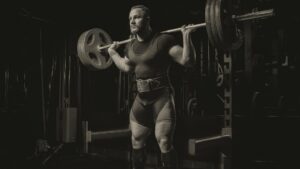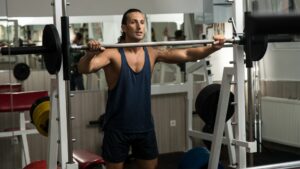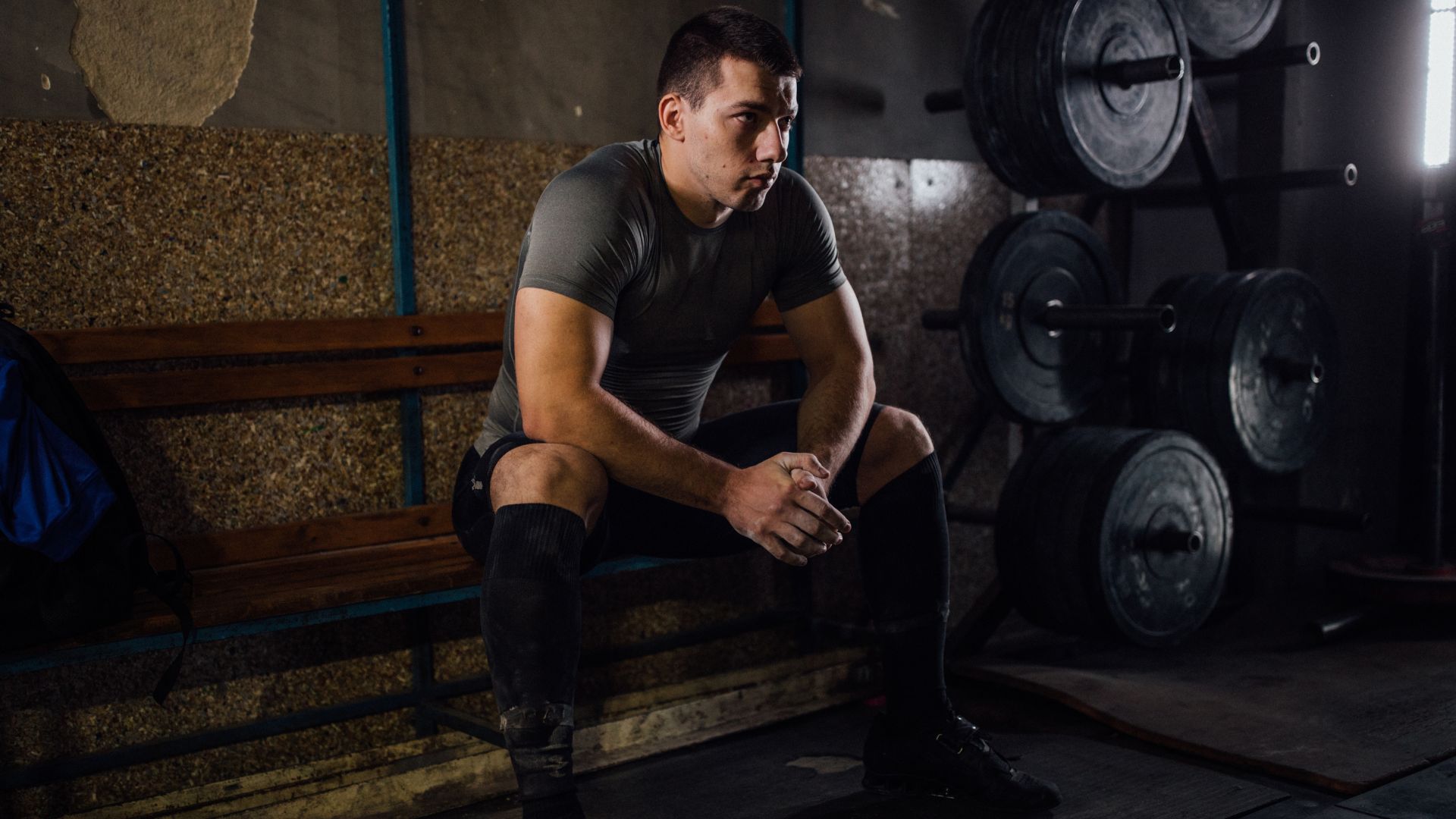Hey there, fitness enthusiasts! Today, we’re diving into the exciting world of strength training, squats, and age. Whether you’re just starting your fitness journey or have been hitting the gym for years, we’ve got some valuable insights to share.
Join us as we explore how age can influence your squatting goals and what you should realistically expect. Let’s lace up those sneakers and get started!
Understanding How Much to Squat at 36 Years Old.
The amount of weight you should be able to squat at the age of 36 can vary significantly depending on various factors, including your training history, genetics, and overall fitness level.
Squatting strength is typically measured in terms of one’s one-repetition maximum (1RM), which is the maximum amount of weight you can lift for a single repetition of the squat exercise.
Here are some general guidelines to consider, but keep in mind that these are just rough estimates and individual variations are significant:
Beginners: If you’re relatively new to strength training or squatting, it’s common to start with a 1RM that’s around your body weight for an untrained individual.
So, if you weigh 160 pounds, you might aim for a 1RM squat of 160 pounds as a starting point.
Intermediate Lifters: With consistent training and proper technique, you can work your way up to squatting around 1.5 to 2 times your body weight.
For a 160-pound individual, this would be in the range of 240 to 320 pounds.
Advanced Lifters: Highly trained individuals, including athletes and powerlifters, may be able to squat 2 to 2.5 times their body weight or more.
In this case, a 160-pound individual could aim for a squat 1RM of 320 to 400 pounds or even higher.
It’s crucial to approach squatting or any strength training exercise with caution, especially as you get older.
Here are some additional tips:
Consult a Professional: Consider working with a certified fitness trainer or coach who can assess your current fitness level and create a personalized training program to help you safely progress in your squatting strength.
Prioritize Technique: Proper squatting technique is crucial to avoid injury.
Focus on maintaining good form and gradually increasing the weight as your strength improves.
Listen to Your Body: As you age, it’s essential to pay attention to how your body responds to training.
Recovery may take longer, and you may need to adjust your training frequency and intensity accordingly.
Incorporate Mobility Work: Regular mobility and flexibility exercises can help prevent injuries and improve your squatting performance, especially as you age.
Remember that everyone’s fitness journey is unique, and progress may be slower or faster depending on individual factors.
It’s essential to set realistic goals, stay consistent with your training, and prioritize safety and proper form throughout your squatting journey.
Additionally, if you have any pre-existing medical conditions or concerns, consult with a healthcare provider before starting a new exercise program.
Further explanations.
Let’s dive deeper and elaborate further on all the points mentioned.
First, let’s break down the explanations for the recommended squatting weights for beginners and intermediate lifters:
Beginners.
When we talk about beginners in strength training, we’re referring to individuals who are relatively new to lifting weights or engaging in resistance exercises like squats.
Here’s the explanation for starting with a 1RM (one-repetition maximum) that’s around your body weight:
1RM and Body Weight:
The 1RM is the maximum amount of weight you can lift for a single repetition of a particular exercise, in this case, the squat.
For beginners, it’s common to begin with a weight that’s roughly equal to your body weight.
So, if you weigh 160 pounds, you might aim to squat 160 pounds as your starting point.
Safety and Technique:
Starting with a weight close to your body weight is a conservative and safe approach.
It allows beginners to focus on learning and perfecting the squatting technique without overloading the muscles and joints too quickly, which can increase the risk of injury.
Building a Foundation:
At this stage, the primary goal is to build a solid foundation of strength, develop proper squatting form, and improve muscle coordination.
As beginners progress, they can gradually increase the weight they lift.
Intermediate Lifters.
Intermediate lifters have gained some experience in strength training and have developed a base level of strength and technique.
Here’s an explanation for why they can aim to squat 1.5 to 2 times their body weight:
Progressive Overload:
As lifters gain experience and their bodies adapt to training, they can safely and effectively increase the weight they lift.
The concept of progressive overload is crucial in strength training. It means gradually increasing the resistance to continue challenging your muscles.
1.5 to 2 Times Body Weight:
Squatting 1.5 to 2 times your body weight is considered an intermediate level of strength. For example, if you weigh 160 pounds, squatting between 240 to 320 pounds falls within this range.
Achieving this level of strength requires consistent training, improved technique, and increased muscle mass.
Balancing Intensity and Safety:
Intermediate lifters have developed enough strength and familiarity with squatting to handle heavier weights while still maintaining good form.
However, it’s crucial to prioritize safety and avoid excessive strain by gradually progressing the weight and allowing adequate recovery between sessions.
In end, the recommended squatting weights for beginners and intermediate lifters are based on safety, gradual progression, and building a strong foundation of strength and technique.
Beginners start with a weight around their body weight to prioritize learning proper form, while intermediate lifters can aim for 1.5 to 2 times their body weight as they continue to advance in their strength training journey.
let’s delve into the explanation for advanced lifters and why they may aim to squat 2 to 2.5 times their body weight or more:
For advanced lifters.
Highly Trained Individuals:
Advanced lifters are individuals who have dedicated a significant amount of time and effort to strength training and have reached a high level of proficiency in exercises like the squat.
This category often includes athletes, powerlifters, and experienced gym-goers.
Progressive Strength Gains:
Advanced lifters have typically exhausted the beginner and intermediate stages of strength progression. They’ve developed a strong foundation of strength, excellent squatting technique, and significant muscle mass.
Optimizing Performance:
For athletes and powerlifters, optimizing performance becomes a key goal. Squatting 2 to 2.5 times their body weight or more is a common benchmark in these disciplines.
This level of strength allows them to excel in their respective sports and competitions.
Specific Training Protocols:
Advanced lifters often follow specialized training programs that focus on maximal strength development.
These programs may include periodization, advanced lifting techniques, and tailored nutrition plans to support muscle growth and recovery.
Individual Variations:
It’s important to note that the ability to squat 2 to 2.5 times one’s body weight can vary depending on genetics, body type, and specific training goals.
Some advanced lifters may exceed these benchmarks, while others may fall slightly below, and that’s entirely acceptable.
Emphasis on Safety:
Even for advanced lifters, safety remains a top priority. Lifting extremely heavy weights carries an increased risk of injury, so maintaining impeccable form, using spotters or safety equipment, and allowing for sufficient recovery time between intense workouts are essential.
In essence, advanced lifters aim to squat 2 to 2.5 times their body weight or more due to their extensive training experience, the need to optimize performance in competitive sports, and their commitment to pushing the boundaries of their strength.
However, achieving these levels of strength requires meticulous training, dedication, and a deep understanding of proper lifting techniques and safety protocols.

Some additional tips to take into consideration:
Consult a Professional.
Working with a certified fitness trainer or coach is highly beneficial, especially if you’re new to strength training or aiming to improve your squatting strength.
Here’s why:
Assessment of Current Fitness Level:
Fitness professionals can assess your current physical condition, including strength, flexibility, and mobility.
This assessment helps them understand your starting point and any specific areas that need improvement.
Personalized Training Program:
Based on your assessment and individual goals, a fitness trainer or coach can create a customized training program.
This program is tailored to your unique needs, ensuring that you work on the right exercises and progress at a safe and effective pace.
Form and Technique Guidance:
Fitness professionals are trained to teach proper exercise form and technique. They can provide real-time feedback and corrections to ensure you’re performing squats correctly.
Proper form minimizes the risk of injury and maximizes the effectiveness of your workouts.
Safety and Injury Prevention:
Trainers can help you select appropriate weights and design a program that minimizes the risk of overuse injuries.
They can also guide you in using safety equipment, such as squat racks or belts, to enhance your safety during heavy lifts.
Motivation and Accountability:
Having a trainer or coach provides accountability and motivation. They can track your progress, set achievable goals, and adjust your program as needed to keep you on the path to success.
Prioritize Technique.
Proper squatting technique is crucial for anyone engaging in strength training.
Here’s why it should be a top priority:
Injury Prevention:
Incorrect squat form can put excessive stress on your joints, especially the knees and lower back, increasing the risk of injuries.
Prioritizing technique helps prevent these injuries.
Effective Muscle Engagement:
Proper technique ensures that you target the intended muscle groups effectively.
This means you’re getting the most out of your workouts and building strength where it matters.
Long-Term Progress:
Good technique sets the foundation for long-term progress. If you learn to squat correctly from the beginning, you’re less likely to develop bad habits that can hinder your progress or lead to injuries.
Consistency:
Proper form allows you to perform squats consistently without pain or discomfort. This consistency is essential for steady progress in strength training.
Confidence:
Knowing that you’re performing squats correctly boosts your confidence in the gym. It can also make your workouts more enjoyable and fulfilling.
In other words, consulting a professional fitness trainer or coach is valuable for personalized guidance and injury prevention, while prioritizing proper squatting technique is essential for safety, effectiveness, and long-term progress in your strength training journey.
These two aspects work together to ensure that you achieve your squatting goals safely and efficiently.
let’s provide explanations for the importance of listening to your body and incorporating mobility work into your strength training routine:
Listen to Your Body.
Age-Related Changes:
As you age, your body undergoes several physiological changes. Muscles, tendons, and ligaments may become less elastic, and joint mobility can decrease.

Bone density may also decrease, which can affect your overall strength and injury resilience.
Recovery Time:
Older individuals often require more time to recover between intense workouts compared to younger counterparts.
This is because the body’s ability to repair and regenerate tissues can decline with age. Ignoring signs of fatigue or overtraining can lead to injuries or burnout.
Injury Risk:
Failing to listen to your body’s signals can increase the risk of overuse injuries, strains, or joint problems.
These injuries can set back your progress and may have longer-lasting effects as you age.
Adjusting Training:
Paying attention to how your body responds to training allows you to make necessary adjustments.
You might need to decrease the frequency of intense workouts, incorporate more rest days, or modify the intensity and volume of your squatting exercises to accommodate your changing recovery needs.
Longevity:
The goal of strength training as you age should be to maintain your overall health and quality of life.
Prioritizing recovery and listening to your body’s cues can help you sustain a consistent exercise routine over the long term.
Incorporate Mobility Work.
Maintaining Joint Health:
Mobility exercises focus on enhancing the range of motion in your joints.
As you age, joint flexibility tends to decline, which can affect your ability to perform exercises like squats safely and effectively. Mobility work helps counteract this decline.
Injury Prevention:
Improved joint mobility reduces the risk of strains, tears, and other injuries during squats.
Proper mobility in areas like the hips, ankles, and spine allows for more natural and efficient movement patterns.
Better Technique:
Adequate mobility contributes to better squatting technique.
It allows you to achieve proper depth in your squat, maintain an upright posture, and distribute the load evenly, reducing the risk of form-related injuries.
Enhanced Performance:
Increased mobility can lead to improved squatting performance.
When your joints move more freely, you can generate more power and strength during each repetition.
Pain Reduction:
Many age-related aches and pains, such as lower back pain or knee discomfort, can be alleviated or prevented with regular mobility work.
This can make squatting and other exercises more comfortable and enjoyable.
In summary, listening to your body and incorporating mobility work into your strength training routine are essential components of safe and effective training as you age.
These practices help minimize the risk of injuries, improve your squatting performance, and promote overall well-being, allowing you to enjoy the benefits of strength training throughout your life.
A concise tabular on this topic here.
Here’s a concise tabular summary of the recommended squatting weights for individuals at different fitness levels when they are 36 years old:
| Fitness Level | Approximate 1RM Squat Weight Range |
|---|---|
| Beginners | Around body weight (e.g., 160 pounds for a 160-pound individual) |
| Intermediate Lifters | 1.5 to 2 times body weight (e.g., 240 to 320 pounds for a 160-pound individual) |
| Advanced Lifters | 2 to 2.5 times body weight or more (e.g., 320 to 400+ pounds for a 160-pound individual) |
Please note that these are approximate guidelines, and individual progress can vary based on factors like genetics, training consistency, and specific goals.
It’s crucial to prioritize safety, proper technique, and gradual progression in your squatting journey, regardless of your age.
Consulting a fitness professional can help you create a personalized plan to achieve your squatting goals safely and effectively.
Conclusion.
In summary, the recommended squatting weight for a 36-year-old individual varies based on their fitness level:
- Beginners can typically start with a weight around their body weight, focusing on learning proper form and technique.
- Intermediate lifters aim for 1.5 to 2 times their body weight, as they continue to progress and develop strength.
- Advanced lifters may target 2 to 2.5 times their body weight or more, particularly if they’re highly trained and competing in strength-related sports.
These are general guidelines, and individual progress depends on factors like training consistency, genetics, and specific goals.
Regardless of age, safety, proper technique, and gradual progression should always be prioritized in squatting to prevent injuries and promote long-term success.
Consulting a fitness professional can help tailor a plan to your unique needs and abilities.

Hey there, it’s Mike Rrsq, the Editor-in-Chief over at Jsquat.com, and I’m absolutely obsessed with all things squat fitness! I’ve been lucky enough to get some serious recognition for my work in this field. With a solid background in the fitness and wellness industry, I’ve been there right from the get-go, helping shape this website into what it is today.
You see, I’m not just the boss around here; I’m also a passionate contributor. I love sharing my insights through my articles, and trust me, they’re not your run-of-the-mill stuff. Each piece I write is a labor of love, filled with my expertise and real-world experience in the fitness universe. So, if you’re into fitness and looking for some inspiration, you’re in the right place!

